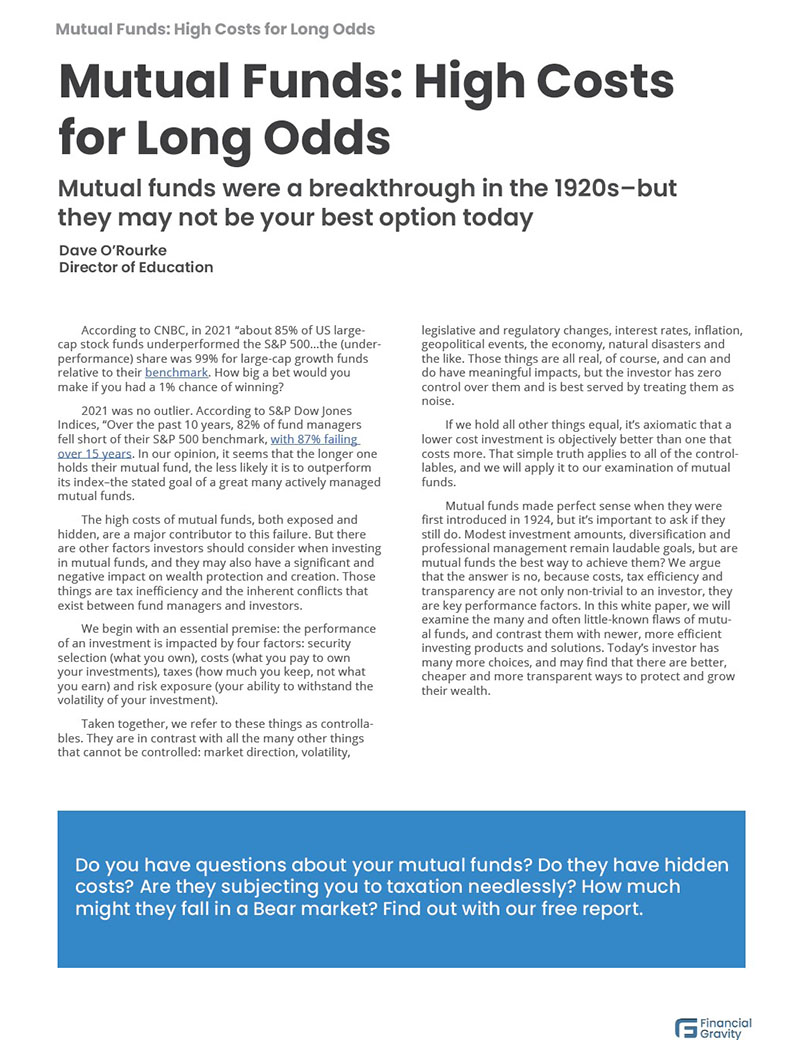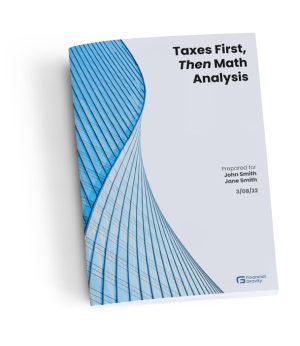Housing prices are in the news again. This topic isn’t all that new; the primary residence remains the largest asset on the balance sheet of American families, so it makes for great clickbait. What’s new is that interest rates have risen dramatically over the past 18 months, driving up the cost of monthly mortgage payments, and this naturally leads to all kinds of speculation about home prices.
What, if anything, should homeowners do? Is this a seller’s market or a buyer’s market? What is the role of your home in your overall financial plan? Should people think of their home as a financial asset in the same way they think about their stock and bond portfolio?
Homeownership in America is a big deal. The National Association of Realtors reported that homeownership rose from 64.7% in 2011 to 65.5% in 2021. There were about 9.2 million more homeowners over that period. Total U.S. home equity reached a record high of $27.8 trillion last year, according to the Federal Reserve[1]. Equity equaled 61% of the $45.3 trillion total value of U.S. homes.
Although there was a dip of 5% from June to December of 2022, the year-over-year gain from 2021 was still 6.5%[2]. Some of the data lag, but the trend is positive and continues the strong performance of 2021, when, according to Bankrate, a majority of buyers purchased their homes for 100% of the asking price. In addition, 29% paid above the asking price, and first-time homebuyers made up 34% of all homebuyers, an increase of 3% from the previous year.
Of course, real estate is not one big, homogeneous thing; data vary widely across the country and even inside metro areas and by county. Ownership varies with median prices generally. Not surprisingly, West Virginia, which has the lowest median home price at $146,578, also has the highest rate of homeownership, at 79%. California, whose median price is by far the highest in the nation at $728,134, has the lowest rate, at 54%.
Overall, the state of home equity is strong. A very small percentage of mortgaged residential properties—just 2%—are underwater. Contrast this with the fourth quarter of 2009, when negative equity peaked at 26% of mortgaged residential properties, based on the CoreLogic equity data analysis[3].
Just a couple of years ago, 30-year fixed-rate mortgages were available below 3% APR. As of this June 13th, the rate was 7.16%. This means the mortgage payment on a $400,000 loan rose from $1,580 to $2,704 in that period, a 71% increase. Despite this rapid rise in homeownership costs, the CoreLogic<> HPI Forecast projects that home prices will increase by 4.6% from March 2023 to March 2024.
By this or any other measure, homeownership is a major component of American wealth. According to the National Association of Home Builders, homeowners’ median net worth is more than 40 times that of renters’[4].
To put this in context, the total market cap of all U.S. publicly owned companies was $40.5 trillion at the end of 2022[5]. Despite 2022’s bear market (-22.31%), the Wilshire 5000, a proxy for the total of all public companies, grew almost 12% per year for the past 10 years[6]. In contrast, median home prices experienced a gain of close to 6% over that same period.
This is not an apples-to-apples comparison of returns because homeownership is leveraged by debt. If we use that 61% equity-to-total-value ratio from above, the equivalent return on median home prices rises to 9.8%. It gets even more complicated when we consider that the interest paid on mortgages up to $750,000 is tax deductible. In the end, it seems reasonable to consider an investment in a home to be roughly similar to your investments in stocks from a total return standpoint.
The nature of the housing market can benefit homeowners during downtimes. When the stock market falls, there is nothing to stop an investor from selling their stock (provided they don’t hold thinly traded stocks like micro caps). But when real estate prices soften, liquidity tends to solidify. Key indicators like days on the market lengthen, while new home starts decline. Supply and demand in real estate often take a very long time to equilibrate.
Real Estate is Part of Your Wealth Ecosystem
Like stocks, industries, and the economy in general, real estate is made up of sectors. As with those other categories, these sectors can experience wildly different returns. The overarching sectors of real estate are residential, commercial, and industrial. Each of those sectors, in turn, has many sub-sectors. In residential, we have single-family, multi-family, apartment, condos, and more. To make things even more complex, there are geographic and demographic sub-sectors, like urban, suburban, rural, agricultural, and undeveloped.
Like stock and bond investors, real estate investors move money from sector to sector as trends emerge. Fifty years ago, the trend of moving from north and east to south and west kicked off the real estate recession in places like upstate New York while it started a boom in cities like Phoenix. Those trends created permanent dislocations.
Another dislocation is happening now, and many believe it’s an externality of the pandemic. For the three decades prior to the COVID nightmare, cities experienced a massive boom in the commercial office sector. The pandemic, and the trend to remote work it created, has spiked vacancy rates in urban centers, a slow-moving but definitive trend that is grinding relentlessly down as long term leases unwind.
A study by the business schools at NYU and Columbia is predicting a 44%[7] decline in New York City commercial real estate, which they call the “Real Estate Apocalypse” and others are calling the “urban doom loop.” Researchers predict a half-trillion loss in New York office space, with lower quality space at risk of becoming stranded assets. Obviously, lots of other cities could be affected similarly, and all of it could be exacerbated by the rising trends in homelessness, coupled with rapidly shrinking revenues for infrastructure as property tax revenues fall.
There may be a silver lining for homeowners in all this, and it may explain why real estate prices have held firm and are even predicted to rise further. Remote workers see a new utility in their home, and that could be (and seems to be) positive for home prices. We are at the leading edge of this trend, but many studies have shown that remote and hybrid workforces appear to be more productive.
How Financial Planners Think About Homeownership
There are some important differences between home-as-investment and investments in securities and it might be useful to recap some of them:
- You get a tax break on your mortgage interest. Obviously, this is a big deal. On the other hand, you can own stocks in your IRA or 401(k), which defers gains until they are withdrawn. This highlights the importance of asset location, meaning the strategy of which type of account holds which types of assets.
- You can take out a loan against your home equity. The interest on that loan is also deductible as long as it’s used to buy, build or improve a property, and conforms with interest caps. This provides additional flexibility for mortgage holders with low loan APRs.
- Using debt to finance your home diversifies your portfolio, and also allows you to seek a higher return elsewhere. Putting all your cash into your home may mean that you will have less money for stocks, bonds, private equity and other investments. Modern portfolio theory would suggest that you diversify among several asset classes. And, for those who truly believe in real estate, holding a mortgage on your principal residence means you can use that extra cash to buy a rental property. This creates concentration risks, of course, but for some people it may be an attractive option.
- Mortgage rates are among the lowest cost debt vehicles you can use, so they can be of value in restructuring your finances. As a practical matter, it probably makes more sense to pay down your credit card and student loan debt before paying down your mortgage.
- Paying off your mortgage can give you a sense of security, but you should make sure your emergency and retirement funds are safe and available to you. Stuff happens, and you may need cash in the event of a job disruption, an unexpected expense, or a health care crisis. Having a ready cash reserve is a cornerstone of financial planning. You should also consider that mortgages can be expensive and difficult to obtain, particularly when you need them most.
On June 13, 2023 the Fed announced a pause in its regime of interest rate rises. It also said that it planned two more before the end of the year. This signals that the Fed sees signs that inflation is cooling off, and is actively pursuing its soft landing strategy. It’s a hopeful sign that a recession can be minimized or avoided altogether, and a positive indicator for home prices.
Owning a home is an important part of your financial life, and should be considered as a part of your overall wealth mix and your diversification strategy.
[1] thehill.com
[2] usatoday.com
[3] corelogic.com
[4] nahb.org
[6] fred.stlouis.com
[7] papers.ssrn.com


